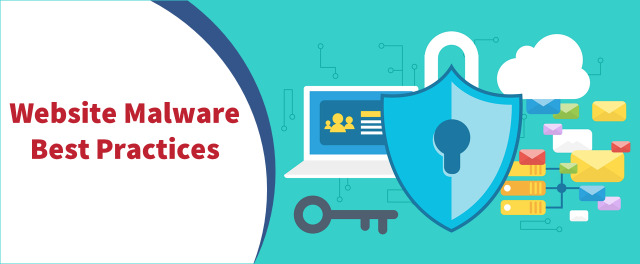
For an online business owner, your website is your virtual storefront. The people that come into that storefront expect you to keep it safe and secure. If your customers and prospects suspect that their safety will be compromised by visiting you, odds are they will avoid your online space and head across the “street” to a competitor. This is why very few things are scarier for an entrepreneur than their website having a malware attack. But, when an incident occurs, there is little time to fret over it because you must jump into swift action and reduce the risk of things getting worse. With that in mind, below are the best practices for website malware removal. Simply follow these guidelines if your business’s website suffers a malware attack.
First Steps to Take After a Malware Attack
1. Check Your Website
The first thing you should do is confirm that your website has a malware infection. You can do a URL scan of your website via VirusTotal. This will check your website using more than 60 URL/domain blacklist services and antivirus scanners to see if your website has a bug.
2. Remove Malware
If your website flags as having malware, the next step is to use a malware removal scanning and removal tool. This will instantly remove the malware from your website. If you don’t have these kinds of tools readily available there are two options.
One is to pay a professional to remove the malware for you. The other is slightly more involved, and that is to do it yourself. YouTube is filled with decent tutorials to walk you through manually removing malware from your WordPress website. However, if you use a CRM other than WordPress you might need to do a little more research into how to remove malware.
3. Restore Clean Backup
Once you or a professional remove the malware from your website, it’s a good idea to load a clean copy of your website to your hosting provider. This is one of the reasons it’s important to regularly back up your business’s website. If your site is ever under attack, it is much easier to load the clean copy. Additionally, it allows you to get back online faster without worrying if you missed any lines of malicious code.
Hopefully, you will never need these tips for malware removal for your business website. On the other hand, if you do, at least you will be better prepared to get back to business as usual. Now, let’s take a look at what you can do to prevent malware attacks in the future.
Steps to Prevent Another Malware Attack
1. Update Login Details
First, change your logins and passwords. A common way cybercriminals gain access to websites and infect them with malware is by guessing login credentials. Once you remove the malware, go ahead and create a new password for the backend of your website. While you’re taking this step, change the name of your admin. Especially if you are still using the default username “admin.” This is the first one nefarious individuals will try to guess the password for. It’s also a good idea to add multi-factor authentication to your login credentials. Then even if a hacker were to figure out your password, they would still need an additional credential to get into your website.
2. Plugin Updates
Next, update your plugins. Believe it or not, one way malicious individuals go about infecting websites with malware is by exploiting plugins that are out-of-date. When an update is available for a plugin, it means there is a patch for a vulnerability the owner/administrator found. Failing to update it on your WordPress dashboard means you have not yet patched it. Therefore, your website has a greater chance of a malware attack.
While you’re updating your plugins, go ahead and add a plugin that prevents multiple login attempts to your website. This can prevent cybercriminals from having endless opportunities to guess the right credentials and sneak in.
3. Add Additional Security
If you had to pay a professional to remove the malware from your website, now is the time to add defenses. These defenses can prevent malware infections from occurring again. A one-time website clean-up can cost you as much as $200 per domain or more. To make matters worse, your website can suffer some hits to its reputation. So you’ll also have to go through the hassle of removing your website from search engine blacklists. But, if you have ongoing support that is scanning for malware and removing it before it can cause a problem, you will save yourself significant time and resources.
You might not realize this, but cybercriminals aren’t picky about the websites they infect. They are looking for websites that are easy to exploit. Therefore, the less prepared your virtual storefront is for an attack, the more likely your business is to suffer for it. If you take nothing else away from this article, at least heed this warning: Malware can be detrimental for the online business owner, but having the right tools can help prevent any downtime. Start looking into malware protection for your business’s website now. Criminals will keep getting smarter, but you can stop them in their tracks – at least on your website!
The post Website Malware Best Practices For Online Businesses appeared first on Mike Gingerich.
Read more: mikegingerich.com









